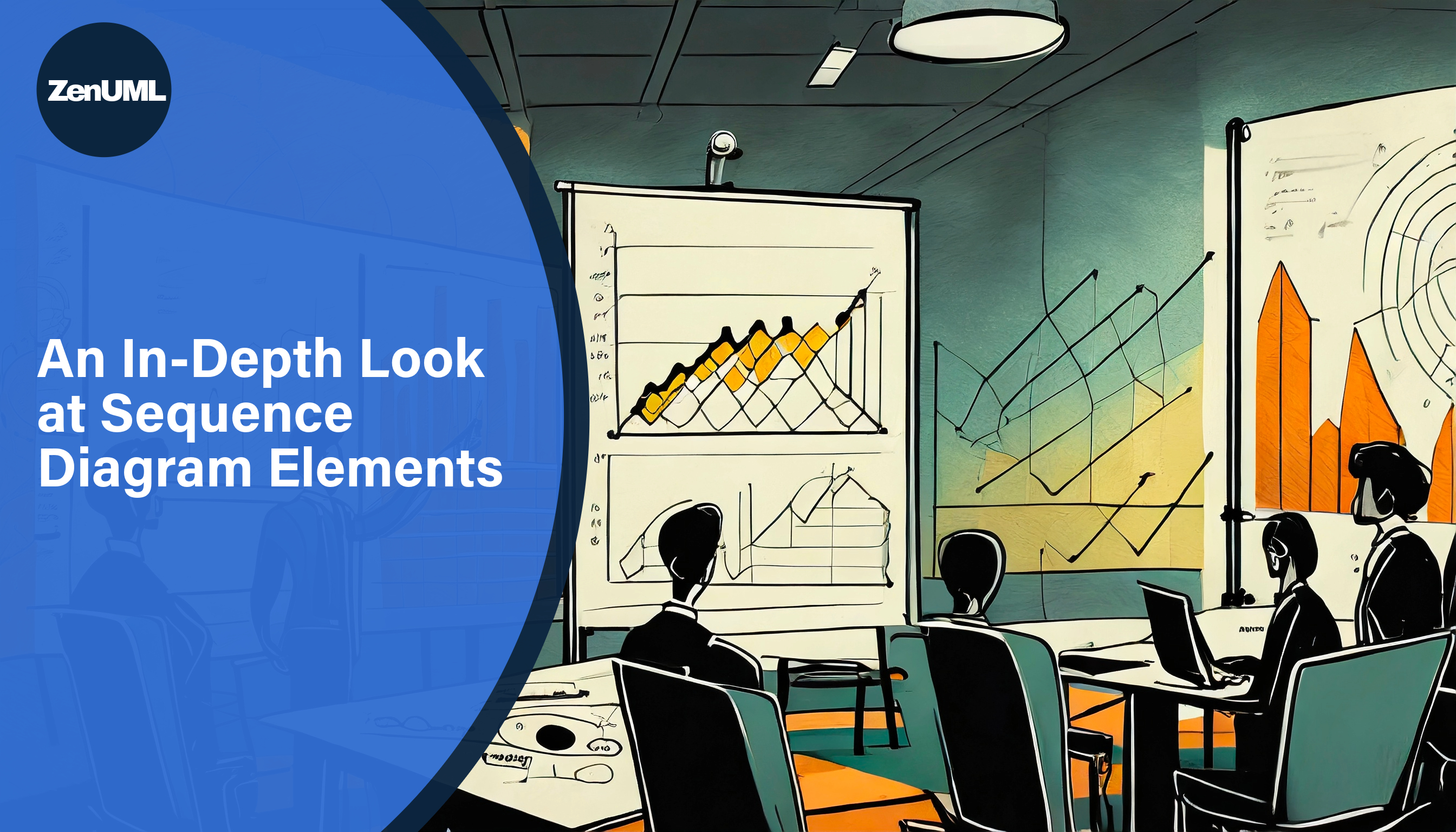
From Timing to Interaction: An In-Depth Look at Sequence Diagram Elements
Welcome back to our series on Unified Modeling Language (UML) where we demystify diagrams one step at a time. Today, we're zooming into the world of sequence diagrams, the dynamic storyboard of object interactions. Sequence diagrams are all about timing and interaction – the very heartbeat of software behavior!
The Cast of Characters: Participants
First things first, let's meet the actors on our stage, known as participants in UML parlance. In a sequence diagram, participants are typically objects or roles that interact within a system. They're represented by rectangles at the top, with their names inside or above, like name tags at a high-tech gala.
Life Lines: The Threads of Existence
Beneath each participant is a dashed line called a lifecycle line or lifeline. Think of it as the thread of existence for the object – it represents the object's presence over time. Lifelines drop down the page in a tranquil freefall, marking the passage of time as we read from top to bottom.
Checkout the same diagram we created above.
Activation Bars: Highlighting Activity
Now, what's a party without some action? Enter activation bars (or focus of control). These narrow rectangles appear on lifelines and indicate when an object is active or performing an operation. It's as if the object is saying, "I'm working on it!" The longer the bar, the longer the period of activity. It's like watching a progress bar creeping across your screen during a software update.
Messages: Dialogue of the Digital Kind
And how do these participants communicate? Through messages, of course! Messages are arrows that dart from one lifeline to another, representing interaction. Solid lines with filled arrowheads denote synchronous calls – the equivalent of a phone call. Asynchronous messages, more like text messages, are a bit more laissez-faire and are depicted with a line and an open arrowhead.
For more information, please refer our language guide
Putting It All Together: An Example
So, how does this all come together?
Below code and diagram describes a real-world design of ZenUML systems.
- The participants represent different components of our system.
- The synchronous messages represent the communications thru interfaces
- Life lines and activation bars clearly express the sequence and scope of each interaction.
Conclusion
In a nutshell, sequence diagrams are like visual jazz – full of rhythm, interaction, and movement. They show the flow of messages, the timeline of actions, and give us a peek into the choreography of objects within a system. So next time you're modeling a process, think of yourself as a director, setting the stage with sequence diagrams that tell the story of your application's dynamic performance.
Happy diagramming!